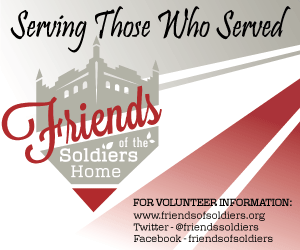Cure the Streets violence interruption program comes to Petworth
/by Austin Schott
This year, Petworth has seen a dramatic increase in gun violence; the rest of the city has seen the same.
Why is that? What is the cause behind gun violence in our neighborhood? I held conversations this last month with a handful of officials and thought leaders to gain a better understanding of the issue and consider what the city is doing to address it.
“The vast majority of the gun violence we see in Ward 4 stems from personal disputes and conflicts between neighboring crews,” Ward 4 Councilmember Janeese Lewis George explained. She said the violence between these groups is often retaliatory. “This stems from a cycle of ‘You did this to me, so now I have to do this to you.’”
Crews are groups of individuals that come from a common block or street and often have tight family connections and roots to the area, according to reporting by the Wash. Crews are generally less organized or bureaucratic compared to a gang. Prominent crews in the Ward 4 include those associated with Kennedy Street, Crittenden Street and Delafield Place.
“Most of the violence [near Petworth] is usually drug market robberies,” said Advisory Neighborhood Commission 4C Commissioner Jonah Goodman. “Robbing dealers for money, robbing dealers for drugs, or retaliation for robbing a drug market — or individuals who maybe aren't doing anything necessarily illegal or illicit, but may have some sort of feud with another group [which leads to] shootings and then retaliatory shootings.”
DC Attorney General Karl Racine announced November 29th that the Office of the Attorney General’s (OAG’s) Cure the Streets violence reduction program is expanding to Petworth and Brightwood Park in 2022.
DC Attorney General Karl Racine (photo Adam Fagen)
Cure the Streets teams, in cases of potential retaliatory violence, will seek to mediate a conflict so that it doesn’t escalate, the OAG’s Violence Interruption Team explained. If there's a shooting incident in the neighborhood, program staff investigate the incident, see if they can determine who among the victim's family, network of friends, or associates might be involved in retaliatory behavior.
They work with rival groups to identify root causes of a conflict and judge what rival parties need in order to walk away from the conflict. After mediation, the street team will continually check in with the main parties to determine whether the agreement is holding.
Mediating these disputes, or “beefs,” isn’t quick or easy, Councilmember Lewis George said. “A lot of the beefs are very much a part of neighborhood cultures and fabrics and have been so for decades.”
Cure the Streets currently operates in six neighborhoods across Wards 5, 7 and 8. The AGO employs a data-driven approach to determine which sites would benefit most for the violence reduction program. The OAG’s Violence Interruption Team said their office identified Petworth as a new site for the program, given historical levels of violence in the neighborhood and ongoing disputes among groups.
A proactively transparent and data-driven program, Cure the Streets closely monitors violent crime statistics in neighborhoods where they’re working. It’s likely too early to tell the impact of the program given limited data. (The program was introduced in 2018.) Assaults with a deadly weapon and gun homicides both decreased in Fiscal Year (FY) 2020 compared to FY2019 in neighborhoods with Cure the Streets sites, but both sets of crimes increased dramatically in 2021.
(Photo: Cure the Streets Metrics; Credit: OAG)
The rise in crime in targeted neighborhoods coincides with an increase in crime across the United States in 2021. Commissioner Goodman suggested this rise is likely linked to the COVID-19 pandemic. “The pandemic as exacerbated so many other root causes and social factors that contribute to violence.”
Violence may increase when individuals are laid off, don’t have access to jobs, are out of school, or face emotional trauma from health risks to family members.
Councilmember Lewis George agreed with this assessment, “People have been disconnected due to the pandemic.” Although, she added, a proliferation of guns in DC may be another factor.
The AGO selects Cure the Streets staff based, in part, on credibility within the communities in which they’re looking to engage. This means that some staff have criminal background or were a part of local crews in the past, but now aim to curb local violence. Councilmember Lewis George has seen the impact of folks who were a part of crews, returning to the community after decades in prison, and, as a credible voice, describing the impact the retaliatory violence had on their lives.
Commissioner Goodman was thrilled to hear the program was coming to his neighborhood. He wrote two ANC resolutions (“Request for Petworth and Columbia Heights Violence Interrupters and additional violence prevention program funding” and “Gun Violence Prevention Budget Recommendations”) asking the city to expand Cure the Streets to Petworth. Goodman sees Cure the Streets as uniquely proactive, addressing the root causes of violence, while often, according to Goodman, DC police activity has been reactive.
He doesn’t think more police is the answer to increased violent crime. He’s outlined in social media his view that more police patrolling the streets isn’t feasible and that DC already has more police per capita than any other major city. Others have advocated for violence interruption programs to more narrowly focus the mandate of police following infamous cases of police brutality.
According to the OAG press release, the OAG is currently soliciting applications from community-based nonprofit organizations interested in receiving grant funding to implement the Cure the Streets program at one or more program sites in 2022.
The deadline for organizations to apply is Wednesday, January 12, 2022. More information is available online.



















